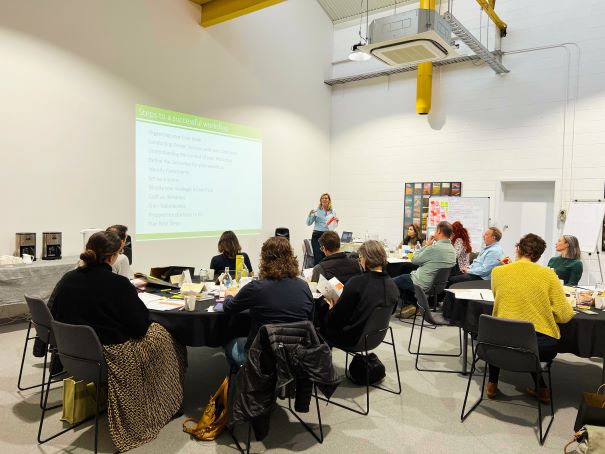Unlocking Success: Exploring the Power of Structured Conversations and Decision-Making Methodologies

An exciting part of my work is when we introduce the Ten skills of Strategic Doing and help others explore how they may gain more results through a structured conversation. At the Agile Strategy Lab, we are strong proponents that the quality of people’s work increases when they apply a methodology that takes the conversation from the beginning to the end.
Some people may feel constrained by a methodology as an individual but will find when working with others the structure helps the group have forward momentum. Each of us can relate to a time when the meeting/decision process caused us to become disengaged. Then our efforts may have been less than our best.
Decision Methodologies
There are plenty of decision-making methodologies to select from and the point is that the group needs one that they can use together. Without one you will find that a group wanders and rarely comes to a decision. This is the reason many people hate meetings. And I am talking about more than an agenda. As the meeting begins the team knows the steps that will be taken from beginning to end. And the convener has taken that process into account so that the meeting ends on time.
At the Agile Strategy Lab, two of our favorite decision-making methods that we find useful are lean management tools which we named Rapid Improvement, and agile leadership/collaboration tools named Strategic Doing. You may have ones that already work for you. The main point is to have a common language of decision-making with a process that is based on moving forward to a conclusion.
Selecting the right methodology
Selecting the right methodology is like selecting the right tool for fixing that broken appliance. It also helps if the person is trained to fix the appliance. Learning new structured methodologies can help you and your team do better. Effective teams agree on a set of tools and add more as needed.
The Rapid Improvement with lean tools is used most frequently on administrative processes such as recruiting, business development, student services, and retention. The similarity is that in all these areas, no one person is responsible for the total client experience. So, it takes more than your department doing well, it takes the whole process covering numerous departments to do well. When you shift the conversation to what the client needs and how we can better satisfy their experience, your team designs new ways of doing things together.
Strategic Doing in an answer
Strategic Doing is often used when the question is adaptive, that is it doesn’t have one answer and the result could be many answers. Take an example of adding 5 plus 5. How many answers are there? Well one as you can see. But if we ask the question how many answers add up to 5 the answer is infinite. That’s an adaptive situation and one that could use the Strategic Doing methodology. In the method there are 10 steps that the participants answer, and it leads them from their question to an action plan with outcomes. Teams that often do not report to each other come together and begin a Strategic Doing journey to improve their community, organization, business, or themselves.
What structured methods do you use to solve problems or reach new opportunities? I would love to hear about them in the comments. You can learn more about our work at www.agilestrategylab.org

Janyce Fadden is Director of Strategic Engagement at the UNA College of Business & Technology, which hosts the UNA Agile Strategy Lab. A co-author of Strategic Doing: 10 Skills for Agile Leadership, she focuses on innovation pipeline strategy and other business engagement projects.
